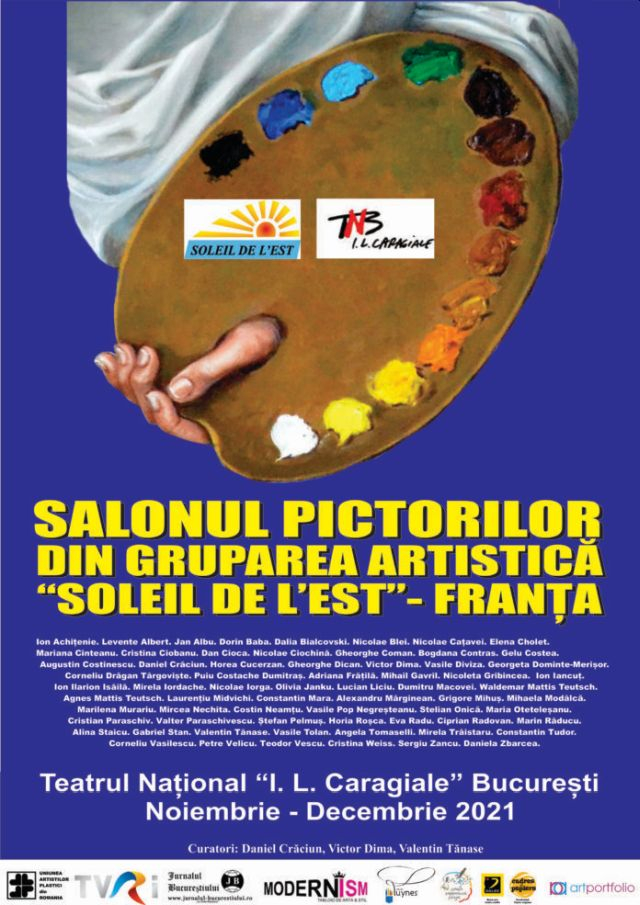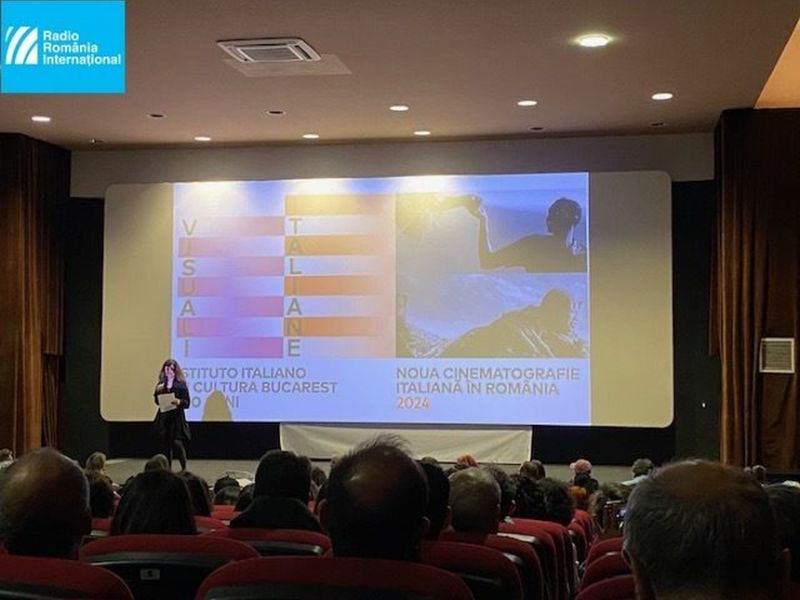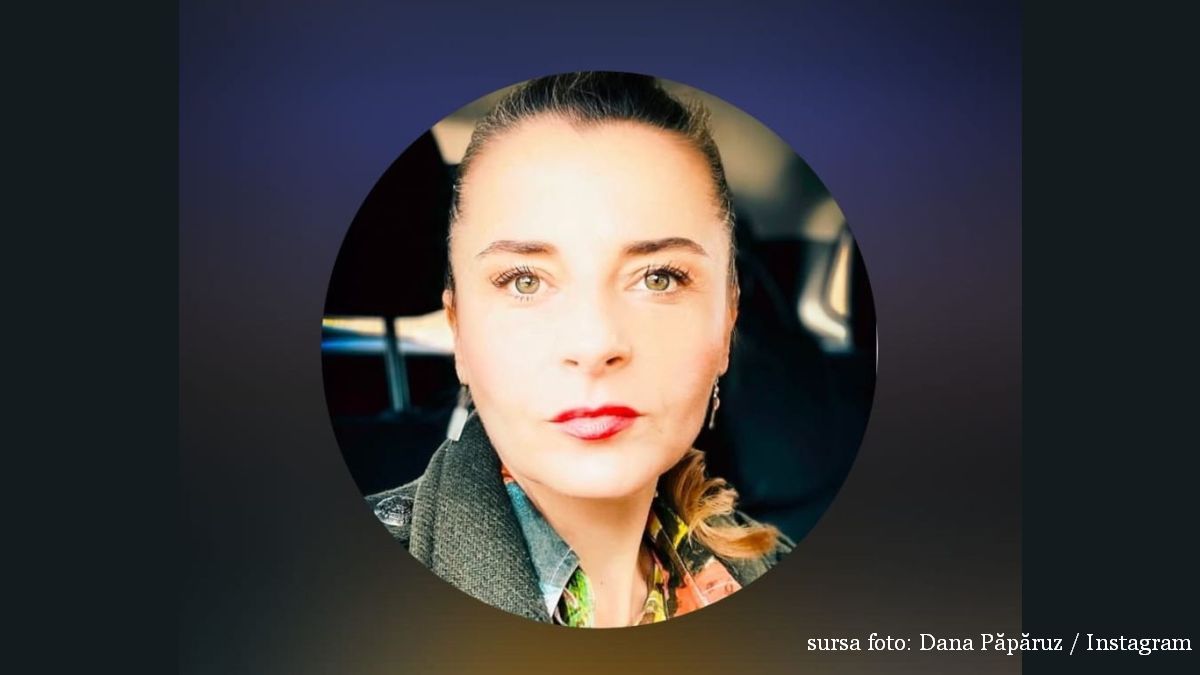The Soleil de L’Est Artist Residence
A new exhibition of the Soleil de L'Est Association opened in the Media Hall of the Bucharest National Theater

Ion Puican, 18.12.2021, 13:37
A new exhibition of the Soleil de LEst Association opened in the Media Hall of the Bucharest National Theater. This event is the Bucharest stage of the Soleil de LEst Artist Residence in Luynes, France. It brings together works by contemporary Romanian painters who took part in artist residencies hosted by the association between 2001 and 2021. These works were made upon the return from France, reflecting the experience of taking part in the residencies. We spoke to one of the curators of the exhibition, Valentin Tanase, about the Soleil de LEst Association, about the exhibition itself, and the artists present there:
“This exhibition is organized by the Soleil de LEst Association, which works mostly in France, inviting there fine artists from Romania for creative purposes, in artist residencies, with the ability and possibility of witnessing and getting information in major French cultural venues. The exhibition covers the work of 65 contemporary artists of all ages. There are senior artists, artists at their peak, but also emerging young artists who are seeking to find their way. We also have works by artists who have left us over the last year, and we wanted to pay them homage here. The exhibition is extremely varied, because the artists come from various areas and environments. Each one has their own style, they each express themselves with maximum earnestness. There is no restriction in terms of style, genre, technique, but I would say what ties it all together is the sincerity of the creative act. These would be the coordinates of this exhibition, eclectic, like any collective exhibition, but which covers the entire palette of contemporary Romanian art.”
Valentin Tanase disclosed to us things behind the scenes of such exhibitions, and about the artists who took part in the Soleil de LEst Association creative camps:
“Organizing an exhibition is a special activity, with special coordinates. First, we have to secure an exhibition space. At the same time, even if we gave to the artists the possibility of bringing in any work of theirs, a curator has to know how to organize them, to harmonize them chromatically, stylistically, which is not always easy. Of course, each piece of art has to be emphasized, and, because each artist has their pride, we have to find a solution for their art to be given attention, so that another artist doesnt eclipse them. This is a delicate and time consuming task, it takes patience, and some dexterity. I was told that over 100 artists, many of them major names in contemporary Romanian art, went to France under the aegis of the Soleil de LEst Association. Many of the exhibitions were in France, because the association has been maintaining contact with cultural entities in France, with town halls, cultural centers and organizations, to find exhibition spaces. At the same time, the association has published several art albums, and gave exposure in the media to these exhibitions and artists. The association is concerned with promoting Romanian art in Western Europe, in addition to the exhibitions, which are a big part of this promotional activity.”
We asked Valentin Tanase to describe a residency:
“First of all, artists are invited in French areas of artistic, cultural, and historical intensity, where other artists have been creating, which inspired luminaries of world art, where they find landmarks of historic artistic creation. At the same time, these camps are places where artists connect, people who might not see each other otherwise. They give them an opportunity for dialog, for exchange of opinions, of enriching each other with their experience. The Soleil de LEst Association has a permanent collection of works by many contemporary artists, and they are taken all over the continent as itinerant exhibitions, not just in France.”
Fine artist Victor Dima, one of the three curators of the exhibition, also spoke to us about these residencies:
“We gathered together artists who took part along the years in the camps, and each artist picked the work that they considered representative for the present moment in their creation. We had exhibitions in the Netherlands, Belgium, Austria, and the public in Western Europe had the opportunity to meet with artists from Eastern Europe, with their work, and get to know the concerns of fine art in this area of Europe. The artists are provided living space, materials, and the opportunity for research in those areas, or even more remote ones. We contact local artists, people exchange impressions, and during the residency they work outdoors or in the workshops, according to everyones way of working, allowing them to express themselves as best represents them.”
Victor Dima also spoke to us about the pandemic, and the effect on creation it had:
“There are two points of view, which I would say are diametrically opposed. On the one hand, we were affected by the pandemic just like everyone else, but artistically I would say it was a boon, in the sense that artists had more time to create, being forced to stay in their workshops more, instead of spreading themselves into other activities that interfere with creative work. The fact that we have works that I consider of very high quality proved that the pandemic, even though it has affected us as people, brought us some benefits as artists.”





























